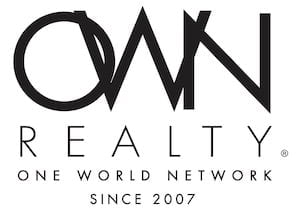
For business owners, A 1031 exchange offers a strategic opportunity to optimize their commercial real estate investments while deferring capital gains taxes. In this comprehensive guide, we delve into the intricacies of A 1031 exchange for business owners, providing insights and strategies for leveraging this powerful tax-deferral tool to enhance their business and financial goals.
A 1031 exchange for business owners presents an invaluable opportunity to optimize their commercial real estate investments while deferring capital gains taxes. This tax-deferral strategy allows them to sell a commercial property and reinvest the Capital gains into another similar property, all while postponing the burden of capital gains taxes.
The appeal of a 1031 exchange for business owners lies not only in the significant tax savings it offers but also in the potential it holds for unlocking a world of investment opportunities tailored to their business objectives. Whether you’re an established business owner looking to expand your real estate portfolio or a newcomer seeking to maximize your returns, comprehending the intricacies of the 1031 exchange for business owners is an indispensable asset.
The cornerstone of a successful 1031 exchange for business owners rests on a solid foundation of understanding the fundamentals. This includes the eligibility criteria, IRS regulations, and the critical role played by qualified intermediaries. To embark on a 1031 exchange, business owners must ensure that the properties involved are held for investment, business, or income-producing purposes and that they are of a similar nature.
It is crucial to emphasize that properties used as the owner’s primary place of business do not qualify for a 1031 exchange. The involvement of a qualified intermediary is central to ensuring the exchange process adheres to IRS regulations. These independent third parties manage the sale of the relinquished property, oversee the funds, and facilitate the acquisition of the replacement property. They are instrumental in maintaining the tax-deferral benefits of the exchange.
1031 Exchange for Business Owners

As business owners navigate the 45-day identification period and the subsequent 180-day exchange period, they must do so with diligence, working closely with their qualified intermediary to meet these stringent deadlines. Beyond these regulatory intricacies, a compelling aspect of 1031 exchanges for business owners is the potential to achieve substantial tax savings, allowing them to reinvest their funds, foster business growth, and enhance their financial stability. This strategy is especially beneficial when considering upgrading to larger, more profitable commercial properties or diversifying their real estate investments in alignment with their business objectives.
Tips For 1031 Exchange for Business Owners
I. The Fundamentals of a 1031 Exchange
A 1031 exchange, also known as a like-kind exchange, is an IRS-sanctioned mechanism that permits business owners to sell a commercial property and reinvest the proceeds into another similar property. This exchange allows them to defer capital gains taxes, offering significant financial benefits. Understanding the basic principles of this strategy is essential to unlock its potential.
II. Eligibility and Property Types
To embark on a 1031 exchange, business owners must ensure that the properties involved are held for investment, business, or income-producing purposes. A diverse range of commercial property types can participate in this tax-deferral strategy, including office buildings, retail spaces, industrial properties, and more. It is important to note that properties used as the owner’s primary place of business do not qualify for a 1031 exchange.
III. The Role of a Qualified Intermediary
In a 1031 exchange, the involvement of a qualified intermediary is pivotal. A qualified intermediary (QI) is an independent third party responsible for overseeing and facilitating the exchange process. They manage the sale of the relinquished property, handle the proceeds, and assist in acquiring the replacement property. By working with a QI, business owners can ensure that the exchange adheres to IRS regulations and maintains its tax-deferral benefits.
IV. The Identification and Exchange Periods
Within the 1031 exchange process, business owners must adhere to strict timeframes. The identification period spans 45 days from the sale of the relinquished property, during which they must identify potential replacement properties in writing. The exchange period lasts 180 days, encompassing the 45-day identification period. Complying with these timeframes is essential to complete a successful exchange.
V. The Tax Advantages of a 1031 Exchange
One of the primary incentives for business owners to pursue a 1031 exchange is the opportunity to defer capital gains taxes. Rather than paying taxes immediately upon the sale of a property, they can reinvest their funds, fostering business growth and financial stability. This strategy is particularly beneficial when seeking to upgrade to larger or more profitable commercial properties.
VI. Strategies for Business Owners
Business owners can employ various strategies to maximize the benefits of a 1031 exchange. These strategies may include portfolio diversification, income enhancement, and tax efficiency. By selecting replacement properties that align with their business objectives, they can optimize their real estate investments while deferring taxes.
VII. Expert Guidance and Professional Support
Given the complexity and regulations associated with 1031 exchanges, business owners are encouraged to seek expert guidance and professional advice. Qualified intermediaries, tax advisors, and legal professionals can provide invaluable support throughout the exchange process, ensuring compliance with IRS regulations and the successful execution of the transaction.
VIII. Navigating the Unique Scenarios
Specialized Exchanges for Business Owners
Explore unique scenarios and specialized exchange options tailored to business owners. These include reverse exchanges, improvement exchanges, and multi-property exchanges, providing business owners with tailored solutions to meet their investment goals.
IX. The Financial Benefits of Tax Deferral
Growing Business Wealth through 1031 Exchanges
Uncover the financial advantages of deferring taxes through 1031 exchanges for business owners. Learn how this strategy can lead to portfolio expansion, increased cash flow, and the preservation of wealth, all while deferring capital gains taxes.
X. Identifying Common Pitfalls
Steering Clear of Exchange Challenges
This section addresses potential pitfalls and challenges that business owners may encounter during a 1031 exchange. Discover how to recognize and avoid these obstacles to ensure a successful transaction.
XI. Success Stories of Business Owners
Inspiring Investment Achievements
Explore success stories of business owners who have harnessed the power of 1031 exchanges to meet their business objectives and enhance their real estate portfolios. These case studies offer valuable insights and inspiration for those considering this strategy.
XII. The Evolving Landscape of 1031 Exchanges
Adapting to Changing Regulations and Opportunities
Stay informed about the future of 1031 exchanges, including potential changes in regulations and the evolving landscape of tax-deferral strategies for business owners. Understanding the trajectory of this strategy is vital for long-term planning.
XIII. Combining Business and Real Estate Success
Synergizing Commercial Ventures with 1031 Exchanges
Discover how business owners can effectively merge their commercial ventures with real estate success through 1031 exchanges. This section explores strategies to align business objectives with real estate investments.
XIV. Overcoming Legal and Regulatory Hurdles
Navigating Complexities with Legal and Tax Guidance
Delve into the legal and regulatory aspects of 1031 exchanges for business owners. Learn about compliance requirements and the significance of legal and tax professionals in the exchange process.
Business owners must also navigate the unique scenarios and specialized exchange options that the 1031 exchange offers. Reverse exchanges enable business owners to acquire a replacement property before selling the relinquished property, which can be particularly advantageous when securing a desirable replacement property becomes a top priority.
Improvement exchanges allow them to use exchange funds to enhance or improve the replacement property, increasing its value and income potential. Multi-property exchanges offer business owners the opportunity to consolidate or diversify their real estate holdings simultaneously, providing a dynamic approach to their investment strategy. These specialized strategies empower business owners to adapt to unique investment situations, maximize their returns, and optimize their real estate portfolios.
1031 Exchange for Business Owners
Furthermore, business owners should appreciate the financial benefits that stem from tax deferral through 1031 exchanges. By deferring capital gains taxes, they gain the advantage of preserving capital and leveraging it for portfolio expansion, increased cash flow, and wealth preservation. The potential for wealth preservation is a particularly appealing facet of the 1031 exchange for business owners.
It allows them to strategically defer taxes, creating a more secure financial future and bolstering the long-term success of their commercial ventures. Through these financial strategies, business owners can unlock the full potential of the 1031 exchange, creating a tax-efficient real estate portfolio that aligns with their business and financial objectives, ultimately contributing to the lasting success and growth of their enterprises.
For business owners, the 1031 exchange for business owners is a transformative strategy that can empower them to navigate the dynamic landscape of real estate investments while optimizing their commercial property portfolio. This tax-deferral mechanism provides a wealth of advantages, permitting business owners to divest a commercial property and reinvest the proceeds into another similar property.
The allure of the 1031 exchange for business owners extends beyond the scope of conventional tax savings; it opens doors to an expansive realm of investment opportunities uniquely tailored to their commercial objectives. Whether you are a seasoned business owner seeking to expand your property portfolio or an entrepreneurial newcomer eager to maximize returns, a comprehensive understanding of the 1031 exchange for business owners is pivotal.
At the heart of a prosperous 1031 exchange for business owners lies a robust comprehension of the fundamentals. This encompasses eligibility prerequisites, IRS stipulations, and the pivotal role of qualified intermediaries. To embark on a 1031 exchange, business owners must ensure that the properties involved serve investment, business, or income-generating purposes and share a similar nature. It is essential to underscore that properties utilized as the owner’s primary place of business do not meet the criteria for a 1031 exchange.
Process Complies with IRS Regulations
The involvement of a qualified intermediary stands as a linchpin in ensuring that the exchange process complies with IRS regulations. These independent third parties oversee the sale of the relinquished property, manage the funds, and facilitate the acquisition of the replacement property. Their role is instrumental in preserving the tax-deferral benefits of the exchange. As business owners navigate the stringent timeframes of the 45-day identification period and the subsequent 180-day exchange period, they must do so with diligence, working closely with their qualified intermediary to meet these rigorous deadlines.
Beyond these regulatory intricacies, a striking facet of 1031 exchanges for business owners is the potential for substantial tax savings. This enables them to reinvest their capital, fostering business expansion, enhancing financial stability, and aligning their real estate investments with their commercial objectives. The 1031 exchange for business owners positions itself as a cornerstone strategy, unlocking the potential for informed decisions, amplified income, and a resilient and tax-efficient real estate portfolio that steers businesses towards long-term prosperity.
Conclusion
The 1031 exchange for business owners serves as a powerful tool to enhance commercial real estate investments and defer capital gains taxes. By understanding the fundamentals, adhering to IRS guidelines, and enlisting professional support, business owners can leverage the 1031 exchange to achieve their business and financial objectives. This tax-deferral strategy empowers business owners to make informed decisions, enhance their income, and create a resilient and tax-efficient real estate portfolio that contributes to the long-term success of their enterprise.

 Call us today:
Call us today: